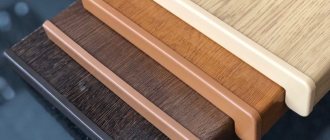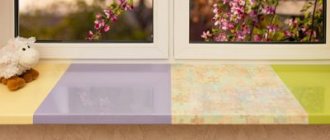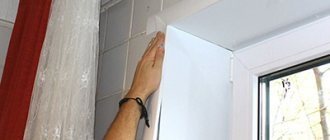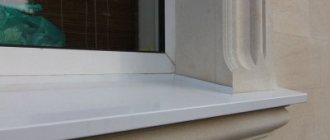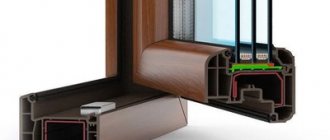A window sill for plastic windows is an integral element of a modern window system. It performs a decorative function, protects the lower part of the wall from getting wet when the window is open and serves as a reliable barrier against the leakage of warm air from the room. It is worth choosing it in advance - not only before installing the window structure, but also before the start of all repair work. This approach will allow you to choose a product of the most optimal dimensions and find exactly the option that best fits into the interior design.
Types of window sills for plastic windows
The construction market is always in the process of development, so consumers receive a wide and constantly updated assortment that helps them create a truly cozy and aesthetically pleasing home. And even accessories such as window sills for plastic windows are presented in a wide variety of options, differing in type, size, and technical characteristics.
The most common materials for window sills include:
- Plastic is an economical and popular option that attracts buyers with its ease of care, large selection of colors, and durability. Products are made of PVC and in high-quality lines are coated with a special composition that is resistant to abrasion and temperature.
- Wood is a worthy solution that lasts for many years, maintaining its integrity and attractiveness. For the production of such window sills, glued or solid boards made from coniferous and deciduous wood are used.
- Composite materials are multi-component window sills for plastic windows, made from several types of raw materials. In most cases, chipboard or MDF is used as a base, and wood veneer or vinyl coating is applied on top.
- Stone is a monolithic product that combines luxurious performance and long service life. They are made from both natural stone and artificial stone, made of acrylic or resins with a mineral filler.
- Concrete - options similar to artificial stone, but made from cast concrete. The binding component in such products is Portland cement, and the decoration is pigments or decorative inclusions.
Plastic window sills
PVC window sills are among the most versatile and practical designs for a window system. They are based on a hollow polyvinyl chloride panel with walls ranging from 1.5 to 3 mm thick. Inside the product there are stiffening ribs that provide the mechanical strength of the board. The surface of the panel can be smooth or rough. In the first case, it must be periodically wiped to remove fingerprints; in the second case, it must be washed to remove dust that accumulates in the texture.
Technical characteristics of standard products:
- length – up to 6 m;
- width – from 10 to 80 90cm;
- thickness – 2 cm;
- tensile modulus of elasticity – 1557 MPa;
- tensile strength – 36.8 MPa;
- impact strength – 29.6 kJ/m².
In addition to the window sill for white plastic windows, panels with a colored or wood structure are also available. Colors are provided by a special surface coating made from PVC or melamine film. Melamine coating is considered more reliable in operation, as it guarantees the product a water-repellent effect, high thermal insulation and shape retention.
Additional attention needs to be paid to
Labeling and quality certificates are not the only things you need to pay attention to when purchasing window sills. When purchasing these products, it is recommended:
- Give preference to products from time-tested brands;
- Make sure there is a protective film;
- Obtain from the seller information about the manufacturer’s warranty obligations;
- Check the number of stiffeners - it is advisable that the distance between them does not exceed 35 mm;
- Find out the maximum load that the product can withstand.
If window sills are ordered together with windows, then all this information must be obtained from the manager, and then checked when delivering the products to the site.
The minimum thickness of the top wall of a plastic window sill should be 3 mm, the vertical stiffeners - 1.5 mm, and the bottom wall - 2 mm.
Advantages of plastic window sills
PVC window sill boards are ideal for plastic windows, since they match them better than others in their technical characteristics. Thanks to the latest production technologies, they are environmentally friendly and do not pose a risk to human health. A special advantage of plastic panels is their increased resistance to moisture, which allows you to grow flowers on the window and not worry at all about the safety of the window sill surface.
The products can be used at any level of humidity and temperature in the room. When done well, they do not turn yellow or fade under the influence of ultraviolet radiation. The honeycomb structure with internal stiffeners contributes to their increased strength, lack of shrinkage and low thermal conductivity. Another advantage of plastic panels is their low level of mechanical wear. They are hard to scratch, they do not chip, and the entire structure is not subject to deformation.
Non-standard option for combining materials
Requirements for safety, environmental friendliness, and the absence of toxic elements in plastic alloys prompted manufacturers to come up with an unusual idea. They began to add a wood component to the PVC mass. Combining materials increases strength and resistance to impacts and deformation, and reduces weight. The scope of application is quite wide: kindergarten, school, hospital and all institutions where safety and low toxicity are needed. Regarding the price, everything is affordable, the outer surface is made of wood and tinted brown. If the customer wants his own color scheme, then film lamination will help create the ideal option.
Wooden window sills
Window sills made of natural wood are appreciated always and everywhere. They have expressive wood patterns and are a good solution for creating a comfortable and stylish environment. Products are made from both inexpensive types of wood (larch, pine, beech, ash) and noble ones (mahogany, ebony or mahogany, meranti). During the production process, the panels undergo a cycle of treatment with antiseptics and other protective compounds, due to which they do not swell from moisture and last a long time.
According to their design, window sills are conventionally divided into two groups - solid panels made of solid wood and veneered products, consisting of a base coated with decorative veneer. The former are most often made to order, while the latter can be purchased in stores according to the required sizes. Veneered products are equipped with an end strip, and special cuts are made at their base to prevent deformation.
If we compare wooden window sills with plastic ones, then, despite the waterproofing impregnations, they are still less moisture resistant. In addition, in combination with white plastic windows they do not look very aesthetically pleasing, so it is advisable to use them only if the window structure has a wood lamination of a similar shade.
Window sills made of stone
Using a stone window sill for plastic windows, you can create an exclusive design and add zest to your interior. The most attractive are products made from natural stone (granite, marble), characterized by increased strength and environmental friendliness. However, they are susceptible to mechanical damage and have a high cost, so not every buyer can afford them. More practical and inexpensive are the artificial stone options available on the market in the following types:
- Made from acrylic. These panels are based on an acrylic composite mixed with a fine filler (such as quartz or marble). To give strength and greater attractiveness, the material is mixed with dyes, hardeners and other components that make it possible to create a monolithic slab with a high level of viscosity.
- Made from resins and quartz. This type of window sill is made by mixing polyester resin with ground quartz. Compared to acrylic ones, they are more susceptible to chipping, but at the same time they have good wear resistance, resistance to moisture and elevated temperatures.
Flaws
The disadvantages include the following.
- Fusibility of the material. If you drop a burning match on a surface, the mark will remain forever.
- Unpretentious design. Despite the many colors provided, this product will not suit the interior, for example, in the Baroque or Renaissance style.
In the case of laminated plastic panels, there is a risk of film detachment or scratches due to physical impact.
Based on the totality of advantages, the disadvantages do not seem so critical. But you need to remember this when using the product.
How to choose a window sill: useful tips
Many consumers believe that window sills have only an aesthetic function, but in fact they are a necessary part of the window system, protecting the room from cold air and providing it with a favorable microclimate. For this reason, the purchase of a window sill board must be approached with special responsibility, paying close attention to the following parameters:
- Appearance. The product should not have chips, scratches or other defects, since it cannot be hidden behind a curtain all the time.
- Material. The choice of material depends on material capabilities and the overall interior design. The cheapest ones are plastic panels, which are also not afraid of moisture, mechanical damage and deformation. The most expensive options are window sills made of natural stone, which bring a touch of luxury and nobility to the room.
- Sections. When choosing a window sill, pay attention to its ends. Plastic panels must have stiffening ribs that allow the structure to remain resistant to various types of loads. The more often they are placed, the more reliable the window sill is.
- Installation method. PVC panels are considered unpretentious to install. They can be mounted in various ways, but the easiest way is on an adhesive base or cement. Wooden products are hygroscopic, so they cannot be placed on a wet base. To place panels of this type, metal brackets or spacers with mounting foam are usually used.
Measurements and calculations
To measure the required size of the window sill board, it is necessary to take into account the recesses that remain after dismantling the old structure. As a rule, the length of a new plastic window sill is 50-150 mm longer than the old one.
The width, in turn, is 30-40 mm, since, unlike a plastic frame of 60-70 mm, wooden frames are 100 m thick. The overhang of the window sill should be at least 10 mm, but not overlap the heating devices.
Standard parameters of window sills:
- The length of standard plastic panels is 4500-6000 mm. As a rule, six-meter strips are supplied to stores and markets, which are cut to the required size on site.
- Width – 100-1000 mm in increments of 50 mm, which allows the use of plastic window sills with different thicknesses of wall partitions. Thanks to this property, the installation depth and further operational characteristics vary.
- Thickness is 18-22 mm, which determines the strength of the product, determines the functional loads and service life.
Accessories for window sills
In addition to the window sill board itself, to install it you need to purchase additional accessories that will give the panel a complete look and help attach it to the window opening:
- End caps - are mounted on the ends of the panel, closing its unsightly cavities. Most often, the planks are made of plastic, but sometimes they have a glued base coated with a laminated film.
- Moldings are strips that cover the space between the window sill and the window frame. They not only make the window sill board more aesthetically pleasing, but also prevent the penetration of cold air from the window.
- Connectors are corner and longitudinal strips designed to extend the window sill.
- Fastening brackets are metal brackets that allow you to connect the window sill to the bottom of the wall after it is placed in the window opening.
- Grilles are decorative nets that cut into the window sill and allow access to hot air from the battery.
Recommendations for determining dimensions
In order for a window sill to be functional and serve reliably for a long time, it is very important not only to select high-quality material and perform the installation correctly, but also to determine its dimensions with maximum accuracy.
The main parameters for any design are length and width. When setting the length, you need to measure the length of the window opening and add 6–10 cm to the resulting figures. The addition of centimeters is done so that the board extends beyond the vertical slopes, otherwise a profile and corner will protrude instead of it, and this is considered unacceptable.
To measure the width of the panel, set the depth of the window opening. The product should protrude 3–5 cm beyond the edge of the wall. Such protrusion dimensions are determined by the nuances of natural air exchange in the room. If the edge of the structure protrudes over a greater distance, it will prevent air from rising from the battery, which will lead to the formation of condensation and then fungus.
Window sill installation
Installing window sills for plastic windows is an important and responsible matter, requiring knowledge of all the intricacies of the construction process. Before proceeding with installation, it is necessary to thoroughly prepare the window opening, remove debris from it and remove dust. Since the window sill board must be recessed into the wall in the area of the slopes, cutting is done in their plane using a hammer drill. Subsequently, it will be masked during finishing.
The fastening method is selected depending on the material of the product and involves several different solutions:
- By means of an adhesive composition. First, markings are made according to the location of the window sill relative to the frame, then the structure is laid on an adhesive base or cement-sand mortar, and then its height is adjusted so that the panel fits the installation point in the frame.
- Metal brackets. A gasket made of wooden blocks is mounted on the window, which are attached to the base using cement-sand mortar or screws. After this, metal brackets are screwed to the window sill, then the panel is inserted into the window opening and screwed to the wall under the window using self-tapping screws. The gaps between the bars are filled with foam, and the joint between the board and the frame is sealed with sealant.
- Lined. The window sill is installed in the opening, then the space under it is filled with spacers (wedges or blocks) until the panel fits under the frame to achieve the maximum level of density.
Regardless of the type of fastening, the product is installed with a slight slope (3–5 degrees) towards the room. This is necessary to ensure the drainage of condensation from windows or water flowing onto the surface in the process of caring for indoor flowers.
Conclusion
Despite the wide variety of window sills, it is very important to purchase them from trusted suppliers, for example, who are always ready to provide quality certificates for their products. When choosing, you should pay attention to the susceptibility of the window sill board to humidity and ultraviolet rays, as well as the density of the material, which should not be less than 1000 kg/m3.
A competent approach to purchasing and proper installation of the structure will guarantee high performance of the window system and its long service life without changing the visual characteristics.
Features of care
The advantage of PVC window sill panels is that they look impressive and remain that way for many years with proper care. But marks from flower pots often remain on the surface, and dust accumulates.
The first rule of care is to not use abrasive cleaners or metal scrapers. This will prevent scratches from forming.
It is recommended to use creamy products marked “for plastic”. It is better to wash with a dish sponge with a hard side, which copes with the task and removes most stains.
In order to refresh the white surface, it will be enough to wipe with a soft cloth with a chlorine-containing preparation. Then rinse it off thoroughly.
If you don’t have special products, you can use ordinary washing powder for white laundry.
The most contaminated place is the gap under the frame. An old toothbrush is suitable for removing dust. The bristles easily penetrate hard-to-reach places and remove debris.
To clean old stains, it is recommended to use baking soda.
To do this, you need to soak a small amount of it until it becomes a paste and apply it to the stains with a sponge. Leave for 10-15 minutes and then rinse with warm water.
When choosing care products, it is important to consider the texture of the material from which the panel is made. Some are smooth, others are rough or porous. Therefore, different means and methods are used for each type.
